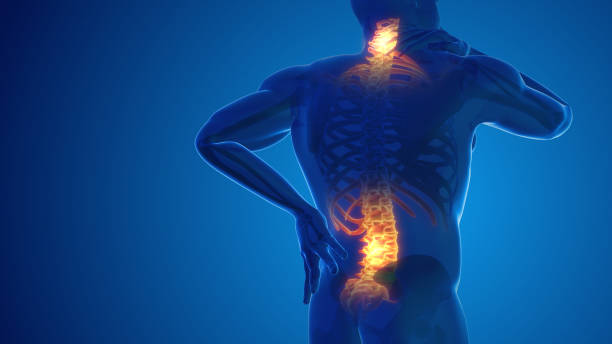The Ultimate Guide to Effective Pain Relief Strategies
Are you tired of suffering from chronic pain and looking for effective solutions to alleviate your discomfort? You’re not alone.
Chronic pain affects millions of people worldwide and can significantly impact your quality of life. From constant backaches to recurring migraines, the persistent nature of chronic pain can be overwhelming. However, with the right tips and treatments, it is possible to manage and reduce chronic pain, allowing you to regain control of your life.
Understanding chronic pain is the first step toward finding effective solutions. Chronic pain is characterized by persistent discomfort that can last for weeks, months, or even years. It can be caused by various factors, including injury, underlying health conditions, or inflammation. Chronic pain not only affects physical well-being but also takes a toll on mental health, leading to anxiety, depression, and decreased overall happiness.
Fortunately, numerous strategies and treatments can help individuals battling with chronic pain find relief and improve their quality of life. From lifestyle adjustments to alternative therapies, the key is to explore various options and determine what works best for your specific situation.

Causes of Chronic Pain
There are numerous potential causes of chronic pain, and they can vary widely from person to person. In some cases, chronic pain may result from an initial injury or illness, such as a back injury, arthritis, or fibromyalgia. In other cases, there may be no clear initial injury or illness, and the pain itself becomes the primary problem.
The five commonest causes of chronic pain include:
1. Injuries
Traumatic injuries, such as those sustained in car accidents or falls, can lead to ongoing pain as the body struggles to heal. In some cases, the injury may have healed, but the nerves continue to send pain signals to the brain.
2. Musculoskeletal Conditions
Conditions affecting the muscles, bones, and joints, such as osteoarthritis, rheumatoid arthritis, and osteoporosis, can cause persistent pain and discomfort.
3. Nerve Damage
Damage to the nervous system, either through injury, disease, or as a side effect of certain medical treatments, can result in chronic pain. Conditions such as diabetic neuropathy and trigeminal neuralgia are examples of nerve-related chronic pain conditions.
4. Chronic Illness
Diseases such as cancer, multiple sclerosis, and fibromyalgia can all be accompanied by chronic pain as a symptom. Managing the pain associated with these conditions is often an essential part of a patient’s overall treatment plan.
5. Psychological Factors
Emotional and psychological factors can play a significant role in the experience of chronic pain. Conditions such as depression, anxiety, and post-traumatic stress disorder can exacerbate pain and make it more difficult to manage.
It’s important to note that chronic pain is a complex and multifaceted issue, and its causes often involve a combination of physical, emotional, and environmental factors. Moreover, chronic pain can have a significant impact on a person’s quality of life, affecting their ability to work, engage in social activities, and perform daily tasks.

Chronic Pain: Understanding the Symptoms and Sites of Discomfort
Understanding the symptoms and sites of discomfort associated with chronic pain is crucial for individuals and their loved ones as they navigate the challenges posed by this condition.
Symptoms of Chronic Pain
Chronic pain manifests in various ways, making it a highly individualized experience.
Some common symptoms of chronic pain include persistent discomfort, aches, and soreness that last for weeks, months, or even years.
Fatigue, sleep disturbances, and changes in appetite are also frequently reported by individuals battling chronic pain.
Additionally, many people experience mood changes, such as irritability, anxiety, and depression, as a result of the relentless nature of their discomfort.
Sites of Chronic Pain
Chronic pain can arise in different parts of the body, leading to diverse experiences for those affected.
One of the most common sites of chronic pain is the back, which can be attributed to issues like herniated discs, arthritis, or muscle strain.
Similarly, joints, including the knees, hips, and shoulders, are frequent sites of chronic pain, often associated with conditions like osteoarthritis or rheumatoid arthritis.
Headaches and migraines are another prevalent form of chronic pain, impacting individuals in their daily lives.
Furthermore, chronic pain can affect the neck, causing stiffness and discomfort that can hinder mobility and overall comfort.
Understanding the sites of pain is essential in developing personalized approaches to manage chronic pain. Recognizing the specific areas where the pain is located allows healthcare professionals to tailor treatment plans to address the unique needs of each individual.

4 Proven Pain Management Tips for Immediate Comfort
If you are one of these individuals, here are four effective strategies to combat chronic pain:
1. Medical Interventions
Seeking medical treatment is often the first step in managing chronic pain.
It’s crucial to consult a healthcare professional who specializes in pain management. They can recommend various medical interventions such as medications, injections, or surgical procedures.
Medications may include pain relievers, anti-inflammatories, antidepressants, or anticonvulsants, depending on the type and severity of the pain.
Injections such as nerve blocks or corticosteroids can provide targeted relief.
Surgical procedures may be recommended for certain underlying conditions causing chronic pain.
For the best results, work closely with healthcare providers to find the most effective medical interventions for your specific condition.
2. Physical Therapy and Exercise
Engaging in physical therapy and regular exercise can significantly improve chronic pain.
A physical therapist can create a customized exercise program to strengthen muscles, improve flexibility, and enhance your overall physical function.
Low-impact exercises such as swimming, yoga, and tai chi can be beneficial for individuals with chronic pain. These activities can help reduce pain, prevent muscle stiffness, and promote better overall physical health.
Additionally, physical therapy modalities like heat, cold, ultrasound, and electrical stimulation can relief your pain and discomfort.
3. Mind-Body Techniques
Incorporating mind-body techniques can be an effective way to manage chronic pain.
Practices like meditation, mindfulness, deep breathing exercises, and guided imagery can help individuals relax, reduce stress, and alleviate pain. These techniques can change the perception of pain and improve emotional well-being.
Furthermore, techniques like biofeedback and hypnotherapy can empower individuals to gain better control over their physiological responses to pain.
Combining these mind-body practices with relaxation techniques can contribute to a holistic approach to managing chronic pain.
4. Lifestyle Modifications
Making certain lifestyle adjustments can play a significant role in minimizing chronic pain.
These adjustments might include maintaining a healthy diet, getting adequate sleep, and managing stress effectively.
A balanced diet rich in fruits, vegetables, and whole grains can help reduce inflammation and promote overall health.
Prioritizing sleep and establishing good sleep hygiene can positively impact pain levels and mood.
Additionally, stress management techniques such as engaging in hobbies, spending time with loved ones, and seeking counseling can help individuals cope with the emotional aspects of chronic pain.

Bottom Line
While chronic pain can be debilitating, it doesn’t have to control your life. By combining lifestyle adjustments, alternative therapies, medical interventions, and emotional support, individuals battling with chronic pain can find relief and improve their overall well-being.
It’s essential to explore various options and work closely with healthcare professionals to create a comprehensive treatment plan that addresses both the physical and emotional aspects of chronic pain. With perseverance and the right strategies, it is possible to overcome chronic pain and reclaim a fulfilling, pain-free life.
Looking to stay healthy without breaking the bank? Don’t look any further.
Subscribe to Kloud Iron’s 28-day fitness program and begin your journey toward optimal mental health and physical fitness.
To learn more about Kloud Iron Fitness Hub’s offers, contact us today or message/follow us on Facebook and Instagram. We are also available on YouTube.


Leave Your Comment